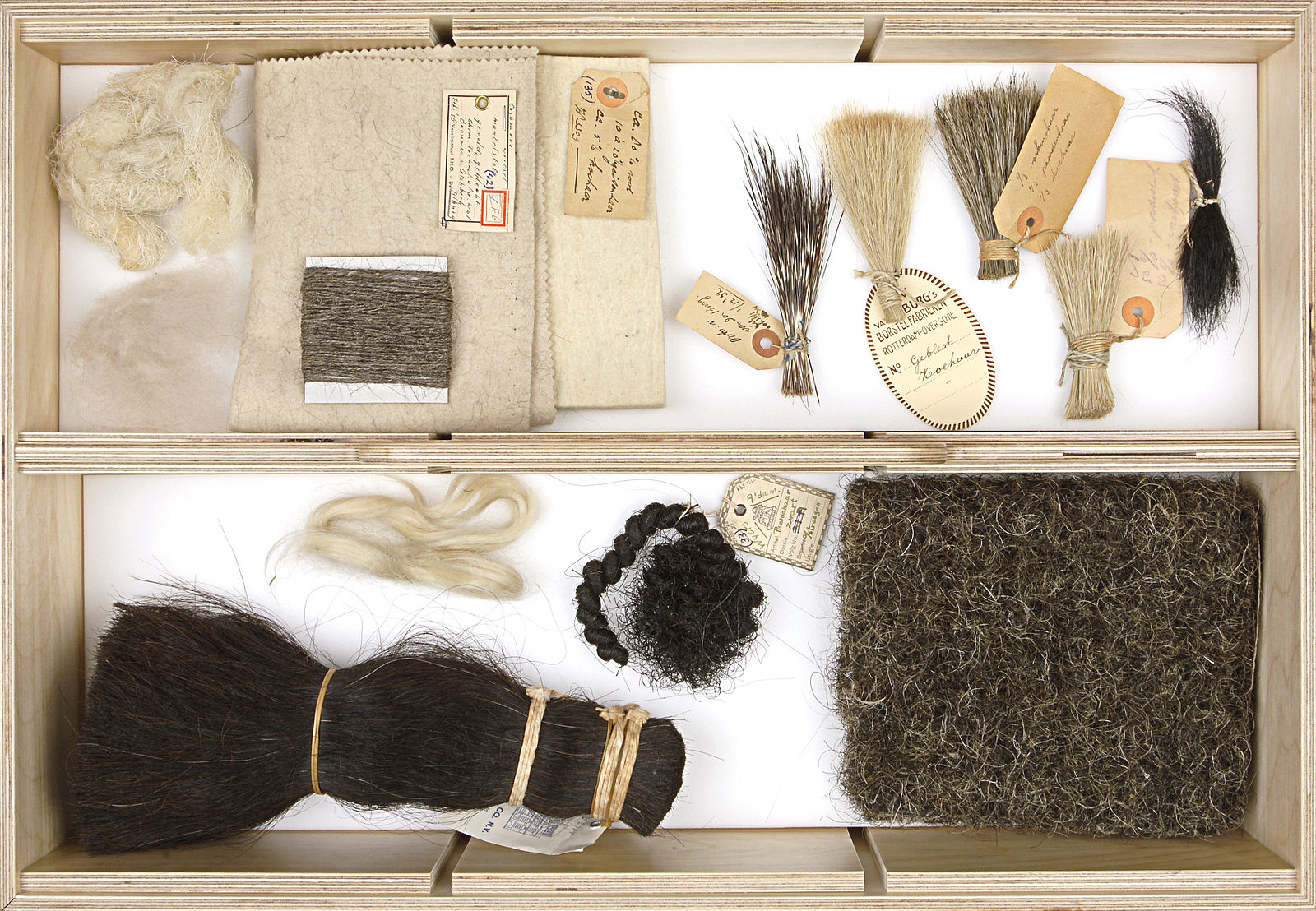Jul 3-5, 2023
Fibers of Existence—Disordering Animals
- 10:00 to 17:30
- Workshop
- Dept. III

Tray and samples of the textile cabinet in the Textielmuseum in Tilburg source: https://commons.wikimedia.org/wiki/File:Textielmuseum-cabinet-16.jpg
The history of natural fibers has often centered around vegetable fibers such as cotton, hemp, jute, and ramie; animal fibers such as wool and furs of different mammals; or the silken secretions of various insects. Fibrous minerals such as asbestos have also received much historical attention. In this workshop on “Fibers of Existence,” we strive to understand the similarities and differences among and between plant and animal fibers. We do so in order to highlight the disciplinary biases that inform how we investigate certain kinds of fibers in nature, and in turn, sharpen the analytic contribution of the notion of “fibers” for the study of animals in the history of science, technology, environment, and medicine.
Animal fibers used on their own, or, more often than not, entangled with plants and inorganic materials, have existed in the form of objects as common as clothing, cleaning tools, or musical instruments. Their ubiquity in ordinary life has made some animal fibers highly noticeable, while others remain invisible due to their ephemeral properties or how they are used specifically between or beneath the surfaces of things.
Contributions to this workshop foreground animal fibers and their distinctiveness in contrast to plant or other fibers. To do this, they show how animal fibers have historically been “in play” as diverse cultural objects and objects of scientific and technological detection, analysis, or mimicry. To historicize how human historical actors have engaged with or thought about animal fibers, this workshop promotes collaboration among individuals interested in multidisciplinary scholarship. We invite participants to bring history of science/technology/medicine/knowledge, museum conservation, archeology, forensics, and/or materials science engineering into conversation and propose co-authored case studies related to the intellectual and practical aspects of one of the following subthemes:
- Processing: What tools, knowledge, cultures, and equipment are implicated in the processes of rendering or processing animal fibers; how animal fibers have gained significance in healing, nutrition, clothing, organization, architecture, etc.—and for whom.
- Reading: How animal fibers are historically identified, described, characterized, and detected, especially in attempts to approach the traces of animals in the absence of living organisms; how proxy methods of analysis are used in forensics and blur the boundaries between human and animal.
- Fungibility: How and why new or existing technologies have replaced animal fibers with alternative biomimetics materials over the longue dureé.
Proposals that combine history of science with different disciplines, expertise, and methods to address animal fibers are preferred. The pre-circulated papers or creative interventions (e.g., photo essay) prepared for this workshop will be considered for an edited volume. Please send proposal abstracts consisting of 300 words (with up to 1 image, optional) to ideoliveiradornelas@mpiwg-berlin.mpg.de and lonaga@mpiwg-berlin.mpg.de by March 7, 2023.
Contact and Registration
This is a closed event. Some audience seating may be available. Please contact Isabela Dornelas (ideoliveiradornelas@mpiwg-berlin.mpg.de) for further inquiries.
